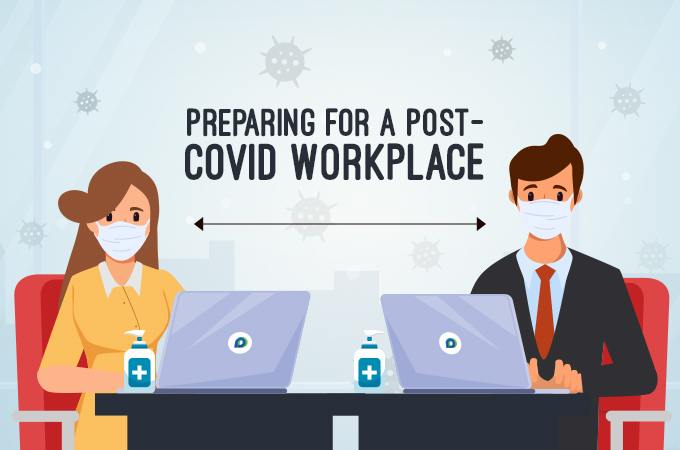With the world still reeling from the pandemic, many organizations have slowly started opening their offices and are asking employees to work from the office space. With many still on the fence about the entire return-to-office scenario, HR managers have a tough job on their hands to complete the process effectively while ensuring employee safety. Determining when to open the office can be tricky especially if not everyone is on the same page. Many have become comfortable and productive in their routines, and disrupting the entire setup can harm productivity. Rushing down things may result in poor employee morale and overall distrust in the organization, and also flag safety concerns.
To make this transition smooth, it is essential to maintain and follow a strategy that prioritizes the interest of both the employer and employee:
- Communicate your reopening plans
Understand how the pandemic has changed habits and made new experiences for employees. Communicate your reopening plans or conduct surveys to know employee opinions on coming back to the office. This will offer valuable insights and make the strategy more full proof. Many people are still facing uncertainty and need to adjust adequately to the situation. Communicating your plan in advance will help them acclimatize better with the reopening. Answer their questions satisfactorily, allay their existing fears, provide details of training and safety programs, implemented disinfection protocols, new policies, etc. to have a more successful strategy in place.
- Ensuring workplace safety
Ensuring a safe working environment for employees and customers has become of paramount importance post the pandemic. It eases their fears and provides a haven for employees to work without any health concerns. Important safety measures may include:
- Implement a health screening process of employees before admission to the premises.
- Providing PPE kits if required, keeping sanitizers and surface cleaners at strategic places.
- Implementing a vaccination policy for employees. For eg, organizing camps, and only calling in employees who are fully vaccinated.
- Introducing staggered shifts or maintaining a flexible work schedule.
- Establishing social distancing measures at the workplace.
- Avoid unnecessary travel to on-site or other places for work.
- Define protocols for visitors or customers visiting the premises.
- Reflect on employee benefit policies
The entire remote working scenario has changed how employees work and plan their day. When reopening offices, it is important to consider the significant behavioral changes to maintain productivity levels. Consider changing or realigning company policies to meet the new world demands.
- Offer flexible leave policy- Irrespective of the vaccination status an employee may still contact the virus and will require the necessary time off to get better and join back to work.
- Offer paid time off- Provide your employees with paid leaves to recuperate.
- Hybrid work model- Instead of asking employees to work entirely from the office, begin with a hybrid model of few days from the office and few days of remote working.
- Staged return to work- Divide employees into groups, and bring them to the office depending on their age, vaccination status, and other demography.
- Health insurance- With the pandemic still raging, offer employees a solid health insurance cover that further boosts their trust in the organization.
- Employee compensation
Many organizations had introduced pay cuts or furloughed employees during the crisis to survive financially. The disruption has affected compensation policies globally, and employers need to reassess their policies once they start resuming their operations. A few compensation policies that need addressing include:
- If pay cuts should be revoked or continued?
- Bonuses and appraisals that could not happen due to the pandemic.
Offering fair compensation to employees reinforces their faith in the organization and helps them become more productive.
- Be flexible
The pandemic has impacted everyone differently and it is important to keep these considerations in mind when assessing reopening strategies. Ask about the experiences of employees to support the ever-changing needs of the workforce. Many workers have found remote working to be more productive and plan to continue so in the future. Draft workplace policies and create a hybrid structure to ease employees back into the process. Many organizations are already offering permanently remote working opportunities to their workers. Having a flexible policy in place improves employee engagement levels in the organization.
No matter your strategy, it is imperative to support and encourage your employees to ensure a successful back-to-office plan. With the situation still being unpredictable, HR managers have a tough job on their hands to manage a smooth rollout process. A single misstep can post serious health implications, which further highlight the gravity of the situation.
